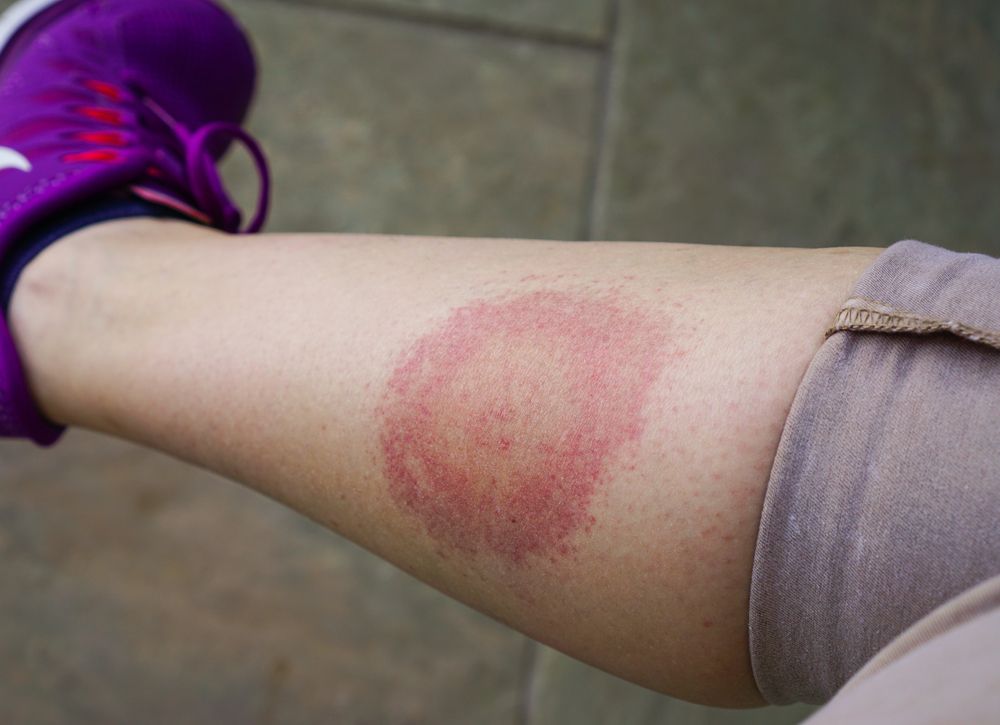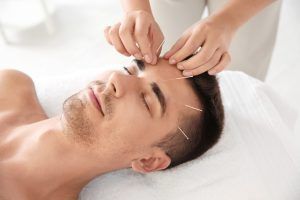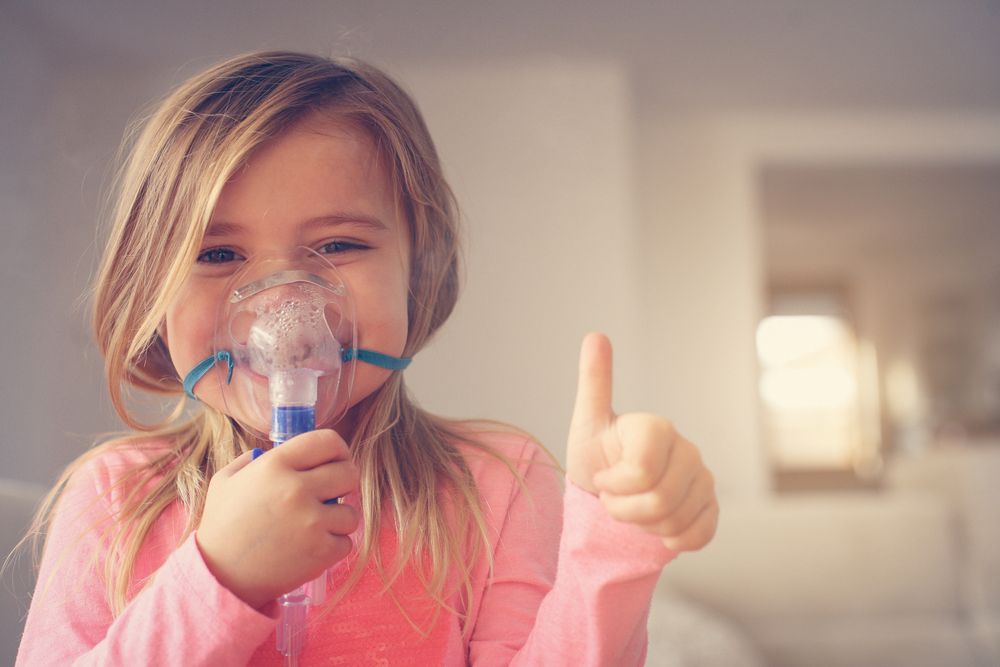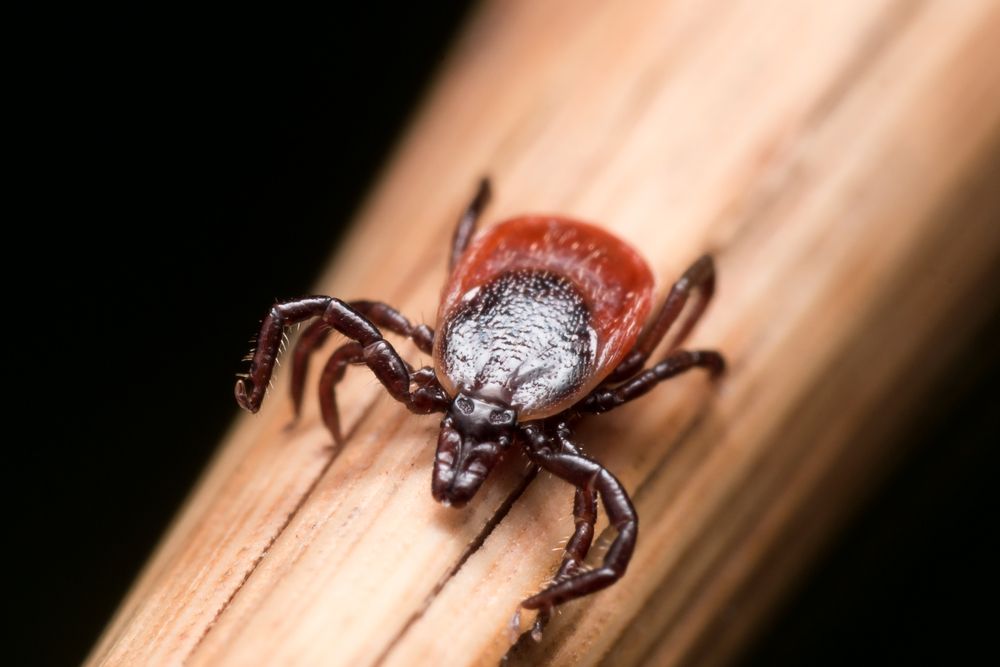Lyme disease is caused by bacteria that are transmitted to humans by infected black-legged ticks. It starts benignly, but without treatment, it can cause severe problems in the brain and limbs. (Learn More, What Is Lyme Disease?)
Standard treatment consists of antibiotics and nonsteroidal anti-inflammatory drugs (NSAIDs). However, alternative therapies like acupuncture, intravenous immunoglobulin, and hyperbaric oxygen therapy may offer relief if traditional treatments are not sufficient. (Learn More, Acupuncture for Lyme Disease?)
While these treatments have not been researched extensively, case studies have been used as evidence of effectiveness. Nevertheless, there is a risk that alternative therapies will exacerbate health issues.
Always check with your doctor before exploring an alternative form of medicine. (Learn More, Do Alternative Treatments for Lyme Disease Work?)
What Is Lyme Disease?
Lyme disease is transmitted to humans by black-legged ticks infected with the bacterium Borrelia burgdorferi, which is often picked up from mice or deer.
Ticks can attach to any part of the human body and are often too small to notice. Once a tick attaches, it must go through at least a full feed (typically completed within 36 to 48 hours) to transmit the Lyme disease bacterium.
Lyme disease is the most common tick-borne disease, and the sixth most commonly reported notifiable infectious disease. The Centers for Disease Control and Prevention (CDC) documented 42,743 cases in 2017. However, studies suggest an estimated 300,000 people are diagnosed with Lyme disease each year in the United States.
The first sign of Lyme disease is stage 1, or early localized disease. This is characterized by a painless rash that appears one or two weeks after the tick bite and can disappear on its own. This apparent resolution (and painlessness) is one reason many people don’t get timely treatment for the disease.
The rash, which is the multiplication of bacteria in the bloodstream, occurs at the location of the tick bite. It is referred to as a “bulls-eye” rash, characterized by a central red spot surrounded by a clear area and a ring of redness at the edge.
The early stages of Lyme disease appear several weeks after the tick bite. This is known as stage 2, or early disseminated Lyme disease. During this time, bacteria are spreading throughout the body, causing flu-like symptoms that may not appear threatening enough to seek treatment.
Stage 3, or late disseminated Lyme disease, can appear weeks, months, or even years after an untreated tick bite. Patients will likely experience:
- Severe headaches
- Inflammation in the joints
- Irregular heartbeats
- Brain disorders that affect sleep, mood, concentration, and memory retention
- Numbness and pain in the arms and legs
Standard treatment for Lyme disease typically consists of antibiotics for bacterial infection and NSAIDs for pain and swelling. However, patients often look to alternative medicines to address long-lasting damage and other problematic symptoms, or even to boost the effects of the medication. These therapies have not been formally approved as treatments for Lyme disease, primarily because little research has been conducted on their effectiveness.
There are many anecdotal stories about various forms of alternative medicine providing relief for Lyme disease when traditional medications have failed. Some websites claim that alternative treatments can outright “cure” Lyme disease, but these uncorroborated statements should be taken with a grain of salt. Every patient should check with their doctor before pursuing any complementary treatment.
Acupuncture for Lyme Disease?
One of the most popular forms of alternative treatment is acupuncture. This is a form of traditional Chinese medicine that emerged from China thousands of years ago. The theory behind acupuncture is that the human  body is full of life energy (called qi) and that illness or disease is the result of this energy being blocked or otherwise out of balance.
body is full of life energy (called qi) and that illness or disease is the result of this energy being blocked or otherwise out of balance.
Acupuncture is the insertion of very thin needles to specific points in the body to restore the flow of energy or remove blockages. Doing so stimulates healing, relieves pain, and promotes relaxation and happiness.
Scientists and researchers are unsure of how acupuncture works and whether it is an effective treatment. One prevailing theory is that the insertion of needles stimulates key nerves into releasing endorphins, the natural painkillers in the body. It is thought that this is the reason behind patients experiencing pain relief and positive emotions.
Another theory is that acupuncture affects the autonomic nervous system (ANS), which releases neurotransmitters to regulate blood flow and pressure. The application of acupuncture can thus influence the ANS to calm the brain and either directly promote relief or increase the effectiveness of medications and other therapies.
There are no clinical trials or studies on the effectiveness of acupuncture in treating Lyme disease. Acupuncture may help patients relax and feel less pain, but it will not rid the body of the Borrelia burgdorferi bacterium. The bacterial infection must be cleared through antibiotics.
While acupuncture is not likely to impede standard treatment and recovery from Lyme disease, patients must not change their drug regimen or consult an acupuncturist without consulting their doctor.
Hyperbaric Oxygen Therapy
Another form of alternative treatment for Lyme disease is hyperbaric oxygen therapy (HBOT), in which a patient breathes pure oxygen through a tube or in a pressurized room.
HBOT is commonly used to treat decompression sickness in scuba divers who come to the surface too quickly. Ambient pressure in the chamber is three times higher than normal air pressure, which triples the concentration of oxygen available to the lungs. This much oxygen entering the bloodstream is thought to help fight invasive bacteria.
A 2014 case study in the Journal of the Chinese Medical Association found HBOT to treat a patient with Lyme disease successfully. However, the Textbook of Hyperbaric Medicine notes that Lyme disease is “not an approved indication for hyperbaric oxygen treatment,” and that there is little evidence to suggest that HBOT can be a reliable treatment. However, “dramatic cases of improvement” have fueled scientists to continue testing its effectiveness.
Light Therapy for Lyme Disease
Light therapy makes use of a light-emitting diode (LED), which produces light across the visible spectrum. LEDs have very low energy consumption, and while this makes them very popular in commercial applications, they also have medical benefits.
Biologists discovered that plant cells exposed to LEDs grew almost 200 percent faster than those that did not receive LED light. NASA-sponsored studies also found that LEDs offered significant relief to pediatric bone marrow transplant patients. These findings led to further testing of LED’s effectiveness in treating a variety of conditions.
In 2017, NBC Washington ran a story of a woman with Lyme disease who found relief through intravenous light therapy. This treatment method involves the injection of LED light directly into veins. A German doctor created a system in which four different lights are introduced underneath the skin, each with a different application.
- Blue light offers anti-inflammatory effects.
- Yellow light provides vitamin D and serotonin.
- Green light boosts oxygen uptake.
- Red light enhances cellular regeneration and stimulates the immune system.
The lights are administered for around 10 minutes each and were found to be effective in relieving symptoms of an autoimmune illness similar to Lyme disease.
Light therapy has been approved by the Food and Drug Administration, but only for muscle pain and arthritis. It is being tested for stroke, traumatic brain injury, and even neurodegenerative diseases.
There is very little information on the use of LED therapy and intravenous light therapy for Lyme disease. In 2016, Forbes magazine found an unqualified company doing more harm than good by promising intravenous light therapy as a cure-all for a broad range of medical conditions, including Lyme disease. In reality, the effectiveness of intravenous light therapy is purely unfounded.
Intravenous Immunoglobulin
Intravenous immunoglobulin (IVIG) refers to the intravenous administration of antibodies. IVIG is approved as  a treatment for several autoimmune, infectious, and idiopathic diseases, including leukemia and dermatomyositis.
a treatment for several autoimmune, infectious, and idiopathic diseases, including leukemia and dermatomyositis.
While some case studies have found IVIG to be effective in relieving symptoms in patients that did not respond to traditional treatment, the CDC warns that these kinds of treatments are still not backed by research and may be harmful to patients. The CDC also cautions against the use of other forms of intravenous therapy for the treatment of Lyme disease due to numerous dangers that are typically unknown to patients.
Do Alternative Treatments for Lyme Disease Work?
While some forms of alternative medicine can offer relief from symptoms associated with Lyme disease, not every approach has been well received. Public health officials and clinicians have warned that some alternative treatments, such as garlic supplements, hydrogen peroxide, and electromagnetic frequency treatments, have no evidence of effectiveness. They can even cause severe harm and death.
If standard Lyme disease treatments are not adequately relieving symptoms, it is imperative to consult with your doctor before beginning any alternative treatments.
References
Transmission. (February 2019). CDC.
Lyme Disease. (March 2017). Healthline.
What Are the Signs and Symptoms of Stage 3 (Chronic) Lyme Disease? (July 2019). Medscape.
Lyme Disease. (April 2018). Penn State Hershey.
What Is Acupuncture? What Are the Benefits? (July 2019). Verywell Health.
Pains and Needles: Brain Scans Point to Hidden Effects of Acupuncture. (September 2017). The Guardian.
What Is Hyperbaric Oxygen Therapy Good For? (September 2016). Medical News Today.
Hyperbaric Oxygen Therapy as an Effective Adjunctive Treatment for Chronic Lyme Disease. (May 2014). Journal of the Chinese Medical Association.
Hyperbaric Oxygen Therapy and Chronic Lyme Disease: The Controversy and the Evidence. (November 2016). Textbook of Hyperbaric Medicine.
Intravenous Light Therapy Provides Relief for People With Lyme Disease. (May 2017). NBC Washington.
Potential for Transcranial Laser or LED Therapy to Treat Stroke, Traumatic Brain Injury, and Neurodegenerative Disease. (July 2011). Photomedicine and Laser Surgery.
UVLrx Therapy Lights Up Charlatans Dealing in Medical Devices. (September 2016). Forbes.
Intravenous Immunoglobulin (July 2018). MedScape.
Serious Bacterial Infections Acquired During Treatment of Patients Given a Diagnosis of Chronic Lyme Disease — United States. (June 2017). Centers for Disease Control and Prevention.
CDC Shuts Off All Prolonged Antibiotic or Immunoglobulin Therapy for Lyme Patients. (June 2017). Lyme Disease Association, Inc.
Dangerous Unproven Treatments for ‘Chronic Lyme Disease’ Are on the Rise. (June 2017). Chicago Tribune.


